Is Fibro Asbestos? Understanding The Difference
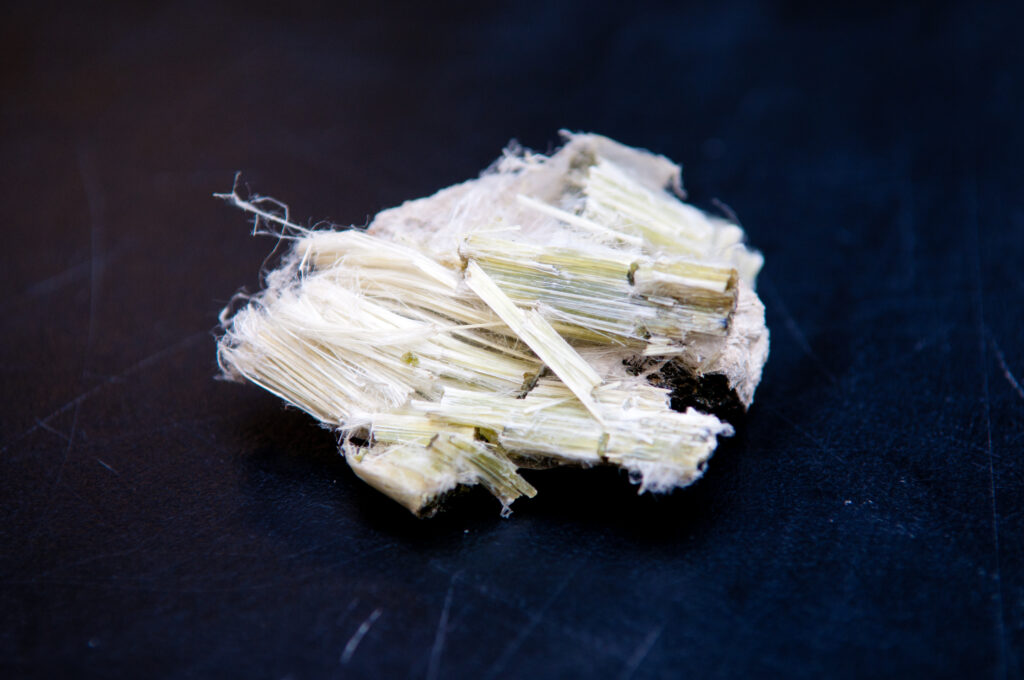
Many homeowners confuse fibro with asbestos, and the question, “Is fibro the same as asbestos?” remains important. Fibro and asbestos are different materials.
Fibro, also known as fibrous cement sheets, frequently contained asbestos as a reinforcing agent between the 1930s and 1980s. Today, modern fibro products do not contain asbestos.
This article will provide in-depth details to help you identify the major differences between the two materials and how to dispose of fibro properly.
If you need to dispose of asbestos, All Gone Rubbish Removals is authorised and ready to dispose of fibro and construction debris safely. We often provide same-day service, or you can book us for rubbish collection on your most convenient day.
What Is Fibro?
Fibro, formerly known as fibrolite, is a building material that is a composite of cement and cellulose fibres. These materials are forced (pressed) into nearly stiff sheets and shapes.
If reinforcing fibres, usually fibreglass, are added to the cement, which results in cement board products. This makes it an ideal material for building, cladding and roofing. Fibro became popular in the 1940s and experienced a significant rise in use after the Second World War, largely due to its lower cost of production.
Original Use in Australian Homes
Fibro became a popular building material in Australia and was widely used by the building and construction industries until the mid-1980s. Its durability, low cost and fire-resistant properties made it popular for domestic construction.
Applications in Homes
Asbestos has been used in building and home construction for its many parts, including:
Walls and Ceilings: Flat sheet of fibrous asbestos material was installed as a wall lining in some houses, particularly between the 1950s and 1970s. It can also be found as a ceiling lining.
Roofing: Ceilings and roofs used highly toxic corrugated sheeting, also called 'Super Six' roofing. It was especially popular in industrial or agricultural buildings and in domestic garages.
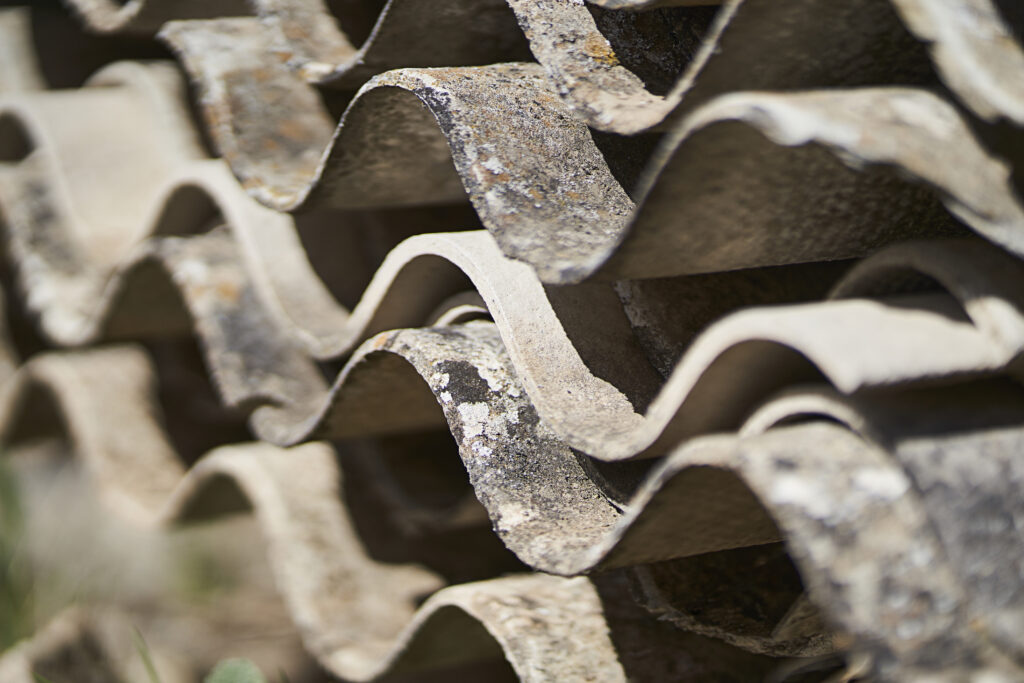
Other Uses: Fibro was also used for internal wet area cladding, known as "Tilux," as well as water and drainage pipes.
Shift from Asbestos to Non-Asbestos Fibro
In the past, fibro mainly used asbestos as reinforcement. Asbestos was a popular option for fibro products from the 1930s through the 1980s due to its durability, versatility, flexibility, and resistance to fire.
However, the importation of asbestos for use in fibro began to decline during the 1980s and was prohibited in 1987. This shift occurred as greater numbers of individuals learned about the severe health consequences associated with asbestos exposure.
Since the ban, advanced fibro products substitute asbestos with cellulose fibres. Although "fibro" is still the popular name for fibre cement, modern products are not made with asbestos. In houses constructed before the late 1980s, there is a high possibility that fibro includes asbestos.
When Does Fibro Contain Asbestos?
The presence of asbestos in fibro in many Australian homes mainly depends on when the house was built or renovated.
Houses Constructed Before 1985: High Probability of Asbestos
The occurrence of asbestos in fibro in homes in Australia largely depends on whether the house was constructed or renovated before or after 1985.
Houses Built Prior to 1985: High Chances of Asbestos
If an Australian house was constructed or renovated before 1985, there is a high likelihood that nearly all fibro products within it contain asbestos. During these years, asbestos was used in fibro products because it was durable, bendy, and fireproof. Asbestos was used in fibro from the 1930s until the mid-1980s.
1985–1990: Transition Phase
For houses constructed or rehabilitated from 1987 to 1990, there is a high likelihood that some of the materials will still contain asbestos. Throughout this phase of transition, the use of asbestos in fibro sheets and products was slowly dwindling.
In New South Wales, the use of asbestos in fibro sheets ceased in 1982, corrugated sheets in 1984, and all other products in 1986. Thus, fibro during this time may or may not contain asbestos, depending on the product type and date of manufacture.
Post-1990: Mostly Free of Asbestos
If a house was constructed or renovated after 1990, it is unlikely to contain asbestos material. By then, the use of asbestos in fibro products had largely ceased, as companies moved to safer alternatives, such as cellulose fibres, as a means of reinforcement.
A ban on the production and use of all asbestos products across the country became completely effective on December 31, 2003, ensuring that building materials are asbestos-free. However, testing for asbestos is the only guaranteed method of determining that fibro is asbestos-free.
Why It Matters: Health & Legal Risks of Improper Disposal
Disturbing fibro dust poses serious dangers because it can release asbestos fibres into the air. This can cause major health issues like mesothelioma, lung cancer, and asbestosis. In NSW, there are strict laws and penalties related to the removal and handling of asbestos to protect public health.
Health Risks Linked to Asbestos Exposure
Exposure to asbestos fibres can cause several serious illnesses, with long delays between the initial exposure and the onset of symptoms.
Mesothelioma
Mesothelioma is an uncommon and aggressive form of cancer that primarily occurs in the lining of the lungs, heart, and abdomen. The disease is directly associated with exposure to asbestos, where study shows that 8 out of 10 mesothelioma patients have been exposed to asbestos. The gap period of the cancer is 15 to 40 years, and in a few cases, it is 30 to 45 years after initial exposure.
Asbestosis
Asbestosis is a chronic, progressive lung disease resulting from inhaling asbestos fibres. The fibres cause thickening and scarring of the lung tissue, impairing the lungs’ function. Symptoms typically emerge between 10 and 20 years after the initial contact.
Lung Cancer
Asbestos exposure also raises the chance of lung cancer, particularly among smokers. The risk of lung cancer increases with dose and duration of asbestos exposure. Symptoms consist of a chronic cough, sputum with blood, chest pain, and recurring chest infections.
Hazards of Disturbing Fibro Dust
If fibro is left undisturbed and in good condition, bound asbestos is of little health concern. However, when fibro is broken up by cutting, drilling, grinding, or water blasting, tiny particles of asbestos fibres may be released into the air. These airborne fibres are easily ingested or inhaled and can become lodged in lung tissues, causing asbestos-related diseases.
Legal Regulations and Consequences in NSW for Asbestos Management
New South Wales collaborates with the Work Health and Safety Regulation 2017 and the Asbestos Code of Practice NSW. The government laid down strict guidelines for safe handling and management of asbestos. These guidelines have to be followed by employers, property owners, employees, and those engaged in construction, renovation, or demolition.
Asbestos Register and Management Strategies
Homes and buildings constructed before December 31, 2003, or workplaces where asbestos has been located must have an asbestos register. Such a register must contain details on location, type, condition, and date of discovery of the asbestos and be available to anyone who may be exposed to it.
Additionally, an asbestos management plan is necessary to outline safe work practices, control measures, incident response procedures, and training information. The plan should be updated at least every five years or in response to changes.
Licensing and Professional Asbestos Removal
Friable Asbestos: Any amount of friable asbestos, which can be easily crumbled or pulverised, must be removed by a licensed Class A asbestos removalist.
Non-Friable Asbestos: A non-friable asbestos removal license is needed for amounts over 10 square metres. SafeWork NSW strongly recommends hiring a licensed professional for any quantity of non-friable asbestos due to the associated risks.
Supervision: Class A removal operations require a designated supervisor to be present. Class B work requires a supervisor to be on-site or readily available.
Air Monitoring and Clearance Certificates: For friable asbestos removal, an independent, licensed asbestos assessor must monitor air quality before and during the removal process. They must issue a clearance certificate before anyone can reoccupy the site. For non-friable asbestos removal, on the other hand, a qualified person or asbestos assessor can issue clearance certificates.
Training and Personal Protective Equipment (PPE)
Employers must provide asbestos awareness training for workers who might come into contact with the mineral. This training should cover how to identify asbestos, handle it safely, and use effective control measures. Workers must wear proper PPE, which includes disposable coveralls, rubber-soled shoes, gloves, and fit-tested respirators (P2 for non-friable asbestos and P3 for friable asbestos).
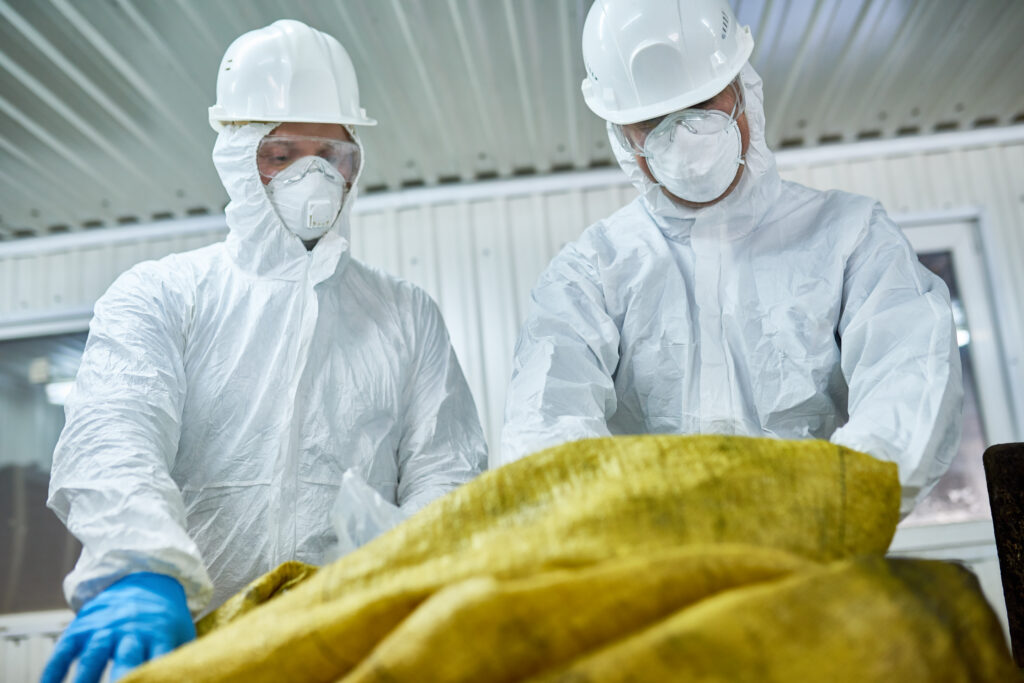
Additionally, workers must have clean-shaven faces to ensure a proper seal on respirators. If not, they should use continuous-flow positive-pressure respirators.
Prohibited Equipment
Using high-pressure water sprays, jets, power tools, or compressed air on asbestos or materials containing asbestos is strictly prohibited. This rule applies unless the equipment is specifically designed to capture or suppress airborne asbestos.
Health Monitoring
Employers are required to provide health monitoring for workers who are at risk of asbestos exposure. This should occur before they begin work and be repeated regularly, at least every two years. Any negative health monitoring reports must be sent to SafeWork NSW.
Fines and Penalties for Improper Handling
Failure to comply with NSW asbestos laws may result in hefty fines and legal consequences.
Environmental Protection Authority (EPA) Fines
Tier 1 Serious Offences: Businesses are liable to $10 million in fines, doubled for serious offences, such as illegal transport or disposal of asbestos waste.
Tier 2 Asbestos-Related Offences: Fines have been doubled to $4 million for businesses and $1 million for individuals.
Improper Disposal: Persons would be liable to pay a maximum fine of $7,500, and businesses would face a maximum fine of $15,000 for the improper disposal of asbestos waste.
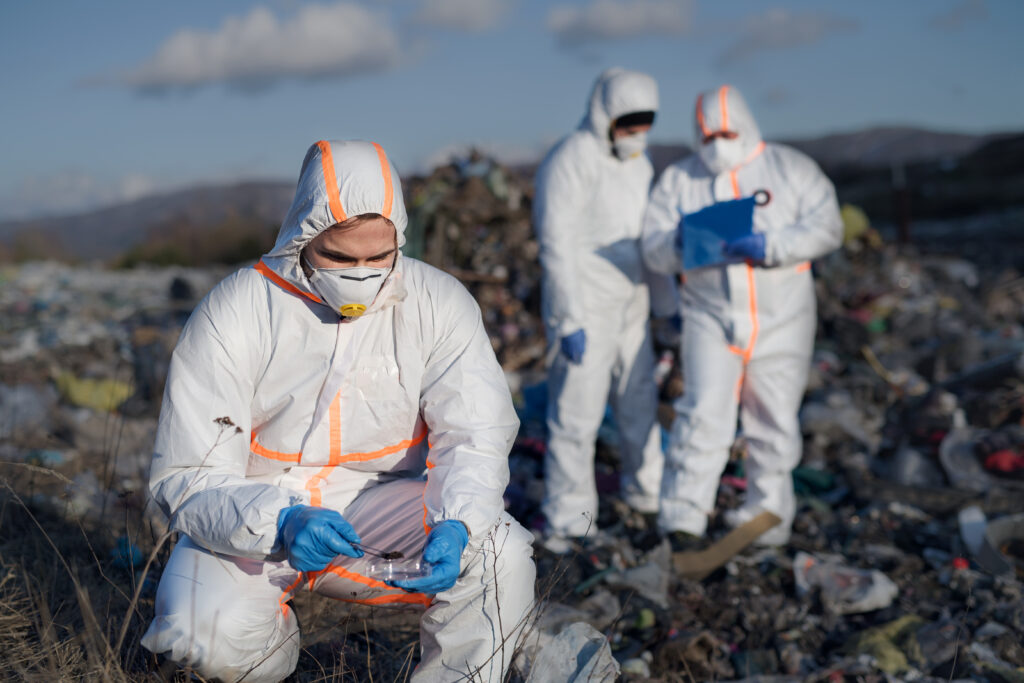
Reusing or Recycling Asbestos Waste: Businesses and individuals who permit the reuse or recycling of asbestos waste would face penalties of up to $2 million.
Work Health and Safety Regulation Penalties
There are specific penalties against the breach of the Work Health and Safety Regulation 2017:
Ignoring Air Monitoring: In Class A asbestos removal situations, a person can be penalised a maximum of 73 penalty units. A company would be fined 364 penalty units in the event of a failure by a licensed asbestos assessor to perform air monitoring.
Failing to Deliver Air Monitoring Results: A person can be fined up to 73 penalty units. A corporation will incur 364 penalty units for failing to deliver air monitoring results to the right authorities.
Failing to Report Negative Health Monitoring Findings: From July 1, 2020, companies can receive fines for failing to report negative health monitoring reports to SafeWork NSW.
For instance, a waste operator was ordered to pay $90,000 in fines for asbestos waste offences at a time when the maximum penalty for an individual was $120,000. The figure was increased to $250,000 in March 2022.
How to Safely Dispose of Fibro & Asbestos-Related Waste in Sydney
To properly dispose of fibro and asbestos waste in Sydney safely, specific procedures must be followed to protect human health and the environment. Asbestos is a hazardous substance, and incorrect disposal is unlawful, resulting in substantial fines.
1. Do Not Disturb Suspected Asbestos
The most important step to control asbestos is to leave it undisturbed. Disturbing asbestos can release dangerous fibres into the atmosphere. Don’t break, cut, drill, grind, water blast, or work with any suspected asbestos product, such as fibro. When asbestos-containing material is disturbed or begins to deteriorate, it can release microscopic fibres. If inhaled, it can develop severe diseases of the lungs, such as mesothelioma, lung cancer, and asbestosis.
2. Hire a Fully Insured Licensed Asbestos Removal Company
It is highly advised to hire a licensed and insured contractor for the safe and lawful removal of asbestos. Licensed asbestos removalists are skilled and trained in the proper ways to remove asbestos safely and adhere to the stringent rules of SafeWork NSW and the NSW EPA. They know the dangers and possess the necessary certifications.
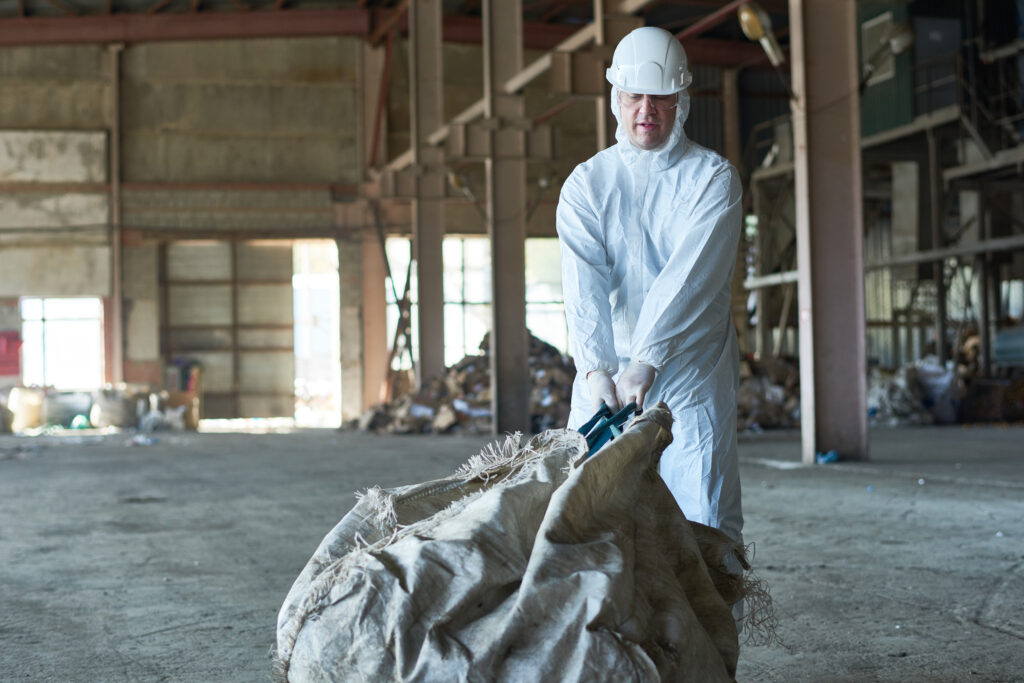
3. Never Dump it in Kerbside Bins or General Skips
Asbestos should never be disposed of in household recycling bins or general waste skips. This is illegal under environmental protection legislation and may result in fines. Additionally, improper disposal of asbestos can lead to environmental pollution, including contamination of soil, water, and air.
Why Choose All Gone Rubbish Removals?
All Gone Rubbish Removals is a licensed asbestos/fibro disposal team that prioritises safety and follows the rules for asbestos removal. We offer services for both homes and construction sites, ensuring the safe removal and disposal of asbestos waste.
We have the necessary expertise and equipment to handle asbestos waste, including materials from construction and demolition projects. We also follow the guidelines set by the Environmental Protection Agency (EPA) and the Clean Air Act.
All Gone Rubbish Removals provides same-day rubbish removal services across Sydney, the Central Coast, and Newcastle. Contact us today at 0427 783 277 for the best-priced asbestos removal service in your area. Book your rubbish pickup before 2 PM and get your FREE quote now!
Frequently Asked Questions
1. How can I tell if my fibro contains asbestos?
You’ll need a professional evaluation to determine if fibro contains asbestos, since asbestos fibres are too small to see with the naked eye. However, you can consider the property's age and the materials used, especially if the building was built before 1990. Additionally, fibro products made before 1987 often had about 15% asbestos. You can also check the back of the fibro sheeting for a green stamp or label that says "asbestos free."
2. Is it legal to dispose of fibro in a regular skip?
Exactly! It is illegal to throw fibro in a standard skip bin. Since November 1, 2015, the EPA has required that all friable materials be treated as if they contain asbestos unless proven otherwise. This means placing fibro in a regular bin could lead to fines for you and the skip bin company.
3. Can fibro be recycled?
Absolutely! Some types of fibre materials, including those sometimes called "fibro," can be recycled.
4. How much does fibro removal cost in Sydney?
The costs for asbestos removal in Sydney usually range from $50 to $150 per square meter. This cost can vary based on several factors, including the type and condition of the asbestos, the amount that needs to be removed, and its accessibility.
For an average home, a full asbestos removal project can cost between $1,500 and $10,000. On the other hand, more complicated removals could exceed $20,000.
5. Is your team licensed to remove asbestos?
Yes! We are a licensed and experienced rubbish removal service, specialising in reliable asbestos disposal. Our team safely removes asbestos waste and ensures the secure, compliant, and efficient disposal of asbestos.
- Is Fibro Asbestos? Understanding The Difference - July 14, 2025
- Household Hot Water Tank Disposal in Sydney - July 14, 2025
- Garage Clean Out & Clearance Services Sydney - July 14, 2025
